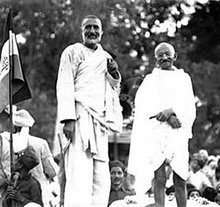Sunday, May 13, 2012
The Islamic Vision of Nizami Ganjavi
Qays ibn al-Mulawwah (d. 688) was a poet of Najd--a region of the Arabian Peninsula renowned for its Bedouin poets. It is not as an historical figure, however, that ibn al-Mulawwah arrests our attention, but as the legendary unrequited lover of the equally legendary Layla: the poet has come down to us as the Mad One, al-Majnun.
"In the rhapsodies of oral traditionists and storytellers (rawis) from Umayyad times to the present day," writes Zia Inayat Khan, "Majnun features as an endearingly pathetic antihero crushed between the claims of society and the claims of the heart" (Preface to the 1997 edition of R. Gelpke's translation of Nizami Ganjavi's epic of Islamic pietism, The Story of Layla and Majnun, xx).
Nizami collected the oral traditions about the star-crossed lovers that were in current circulation during his lifetime and committed them to the immortality of Persian verse in the year 1188 C.E. In so doing, he brought to the fore the religious character that the tales had acquired through their long phase of oral elaboration and refinement in Muslim societies. In Nizami's hands, Majnun's "madness" is, in fact, the piercing sanity of one who refuses to accept the world as it is: a violent place, riven by the Satanic exigencies of fear and greed. Instead, Majnun embraces compassion for all living things: friend and foe, human and non-human alike.
Contemporary American culture, predicated on a life-style littered with cheap luxury goods obtained through the systematic impoverishment of foreign others and given over to base amusements of violence and sexual exploitation is incapable of absorbing the wisdom and religious insight with which Nizami endowed his telling of this traditional tale. Majnun the ascetic, Majnun the pacifist, Majnun the pietist--all present in Nizami's epic--are repressed in the cultural memory. What remains is the distorted image of Majnun overcome with desire: the typical American consumer incapable of saying "no" to his own insatiable wants for creature comforts.
The Islamic vision of Nizami Ganjavi is nothing less than a litmus test for the spiritual estate of the reader. Few bother to approach it and fewer still can read it with profit. By rights, Nizami's epic ought to be the central text of our time; instead, the central text remains T. S. Eliot's "The Hollow Men"--though, despite its centrality, Eliot's poem amounts to little more than social commentary.
This is the way the world ends
This is the way the world ends
This is the way the world ends
Not with a bang but a whimper.
Subscribe to:
Post Comments (Atom)




No comments:
Post a Comment